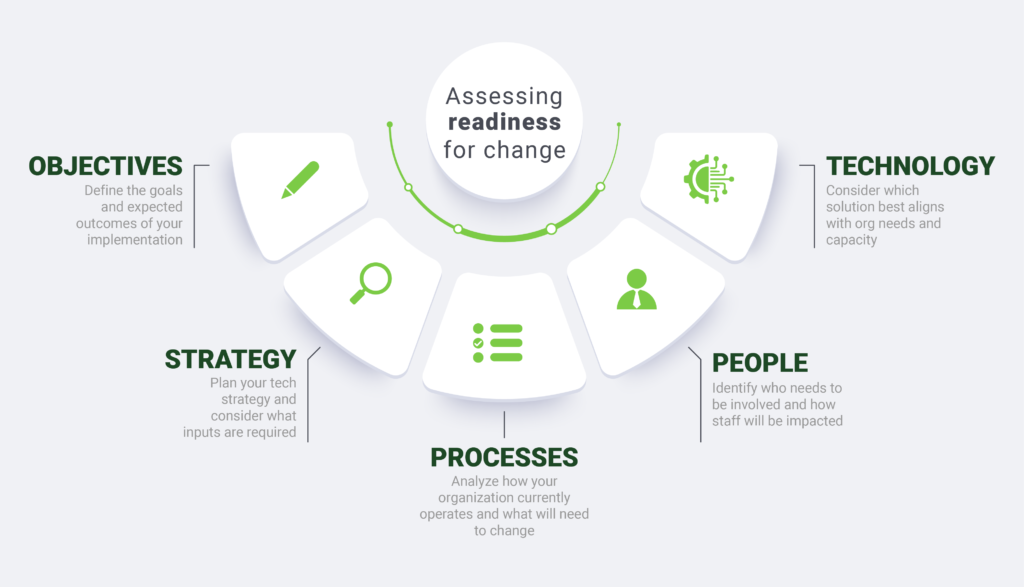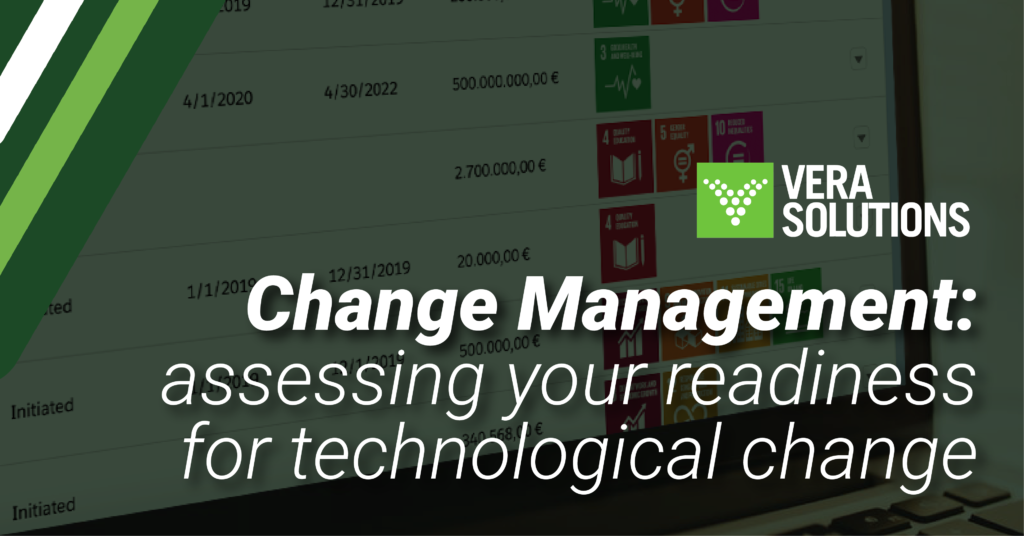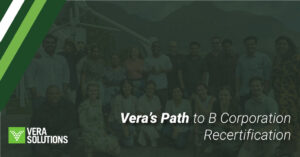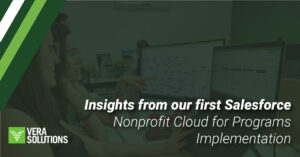A technology implementation can be a complex process, and ensuring readiness is crucial for its success. The first step is to understand your organization’s readiness for change by considering the following questions below.

1. Objectives
Clearly define the objectives and expected outcomes of your technology implementation. This will help guide the entire process and ensure alignment with organizational goals.
- What are the business challenges that you are trying to solve?
- What are some of the questions you are trying to answer?
- What would a successful tech implementation look like for your organization?
2. Strategy
Plan for your technology implementation and communicate the expected changes to the organization. Identify potential resistance points and develop strategies to address them.
- Do you have strong executive buy-in to ensure necessary support and involvement throughout the implementation? Are the objectives clear to all relevant stakeholders?
- What resources are available? Consider budget, timeline, staff availability, and staff capacity in the short- and long-term. Is third party support required?
- What is the quality of existing data? Develop a data migration strategy to ensure a smooth transition of data from legacy systems to Salesforce. Cleanse and de-duplicate data before migrating.
- How will the success of your technology implementation be monitored and evaluated?
3. Processes
Consider how your organization currently operates and how business processes may change after the technology implementation.
- Do you have a clear understanding of your organization’s current processes?
- Is the new technology able to support your organization’s current processes? Are there opportunities to optimize or automate business processes with your new technology?
- Have you considered how you might implement any required changes to your processes? How can your organization successfully manage these changes? Consider the feasibility of these changes given the resources available.
- What assumptions about your processes must remain true for the technology to function as expected?
4. People
Understand who needs to be involved in the tech implementation and who will be impacted. Engage end-users in testing and gather feedback for necessary refinements, and plan an engagement and training strategy.
- Who are the key decision-makers? Do they have the availability, organizational knowledge, and skillset to participate in the technology design and rollout?
- What is the technical capacity of your staff? What resources and training might be required to administer and support the new technology options?
- What is the infrastructure and tech resources already available to your staff? Do they have reliable access to the internet? Do they already own mobile devices?
- Does your organization need the support of a third party implementer or funder to manage the technology implementation?
- Who are the people involved in your organization’s processes? How might they be impacted by the new technology options?
- Will technology users need to change their current behavior? If yes, how will this change be managed? What support plan is in place to help employees resisting change?
- How will the solution be introduced to the company? What will the communication look like?
- What are the user groups for the new solution? What is the training strategy for general users versus power users?
5. Technology
Consider which technology best responds to your organization’s needs and capacity. For a more in depth analysis, check out Vera’s blog on the 10 Criteria To Evaluate When Choosing A New Technology.
- What are the requirements for your new technology? What needs and processes should it support?
- What are the different technology options under consideration? How do they satisfy key requirements (e.g. features, security, user-friendliness)? How do you plan to address any gaps in requirements?
- Are the technology options feasible and realistic given the objectives, strategy, process, and people considerations you’ve identified?
- Can the technology be adapted to match your organization’s needs over time?
- What ongoing support is required for the technology option?
- Does your organization have the capacity to design, administer, and support the technology? Consider seeking third party support if necessary.
- What time is required in preparation of training plans and user guides?




